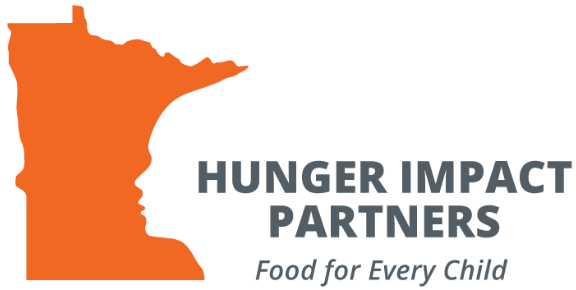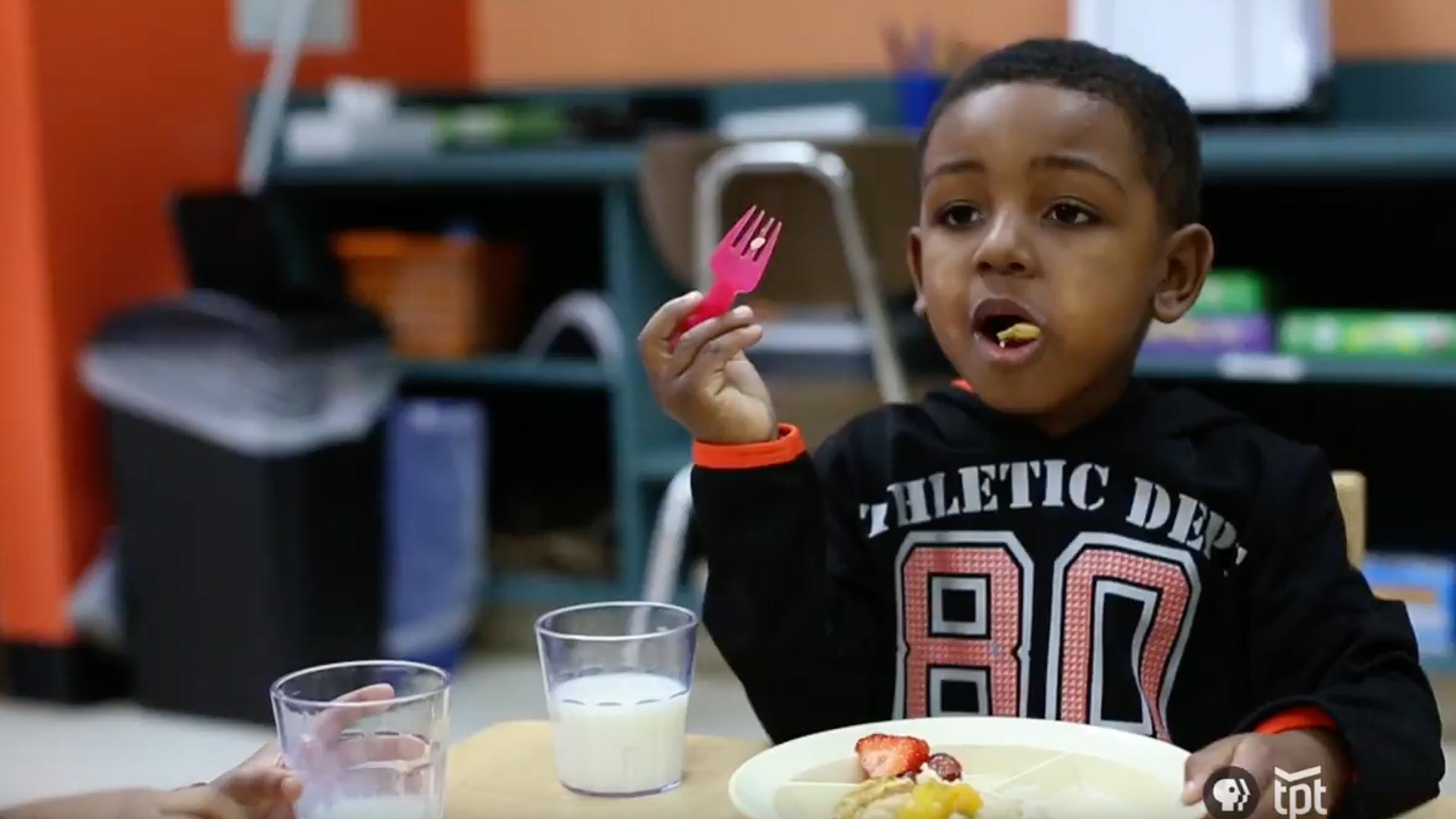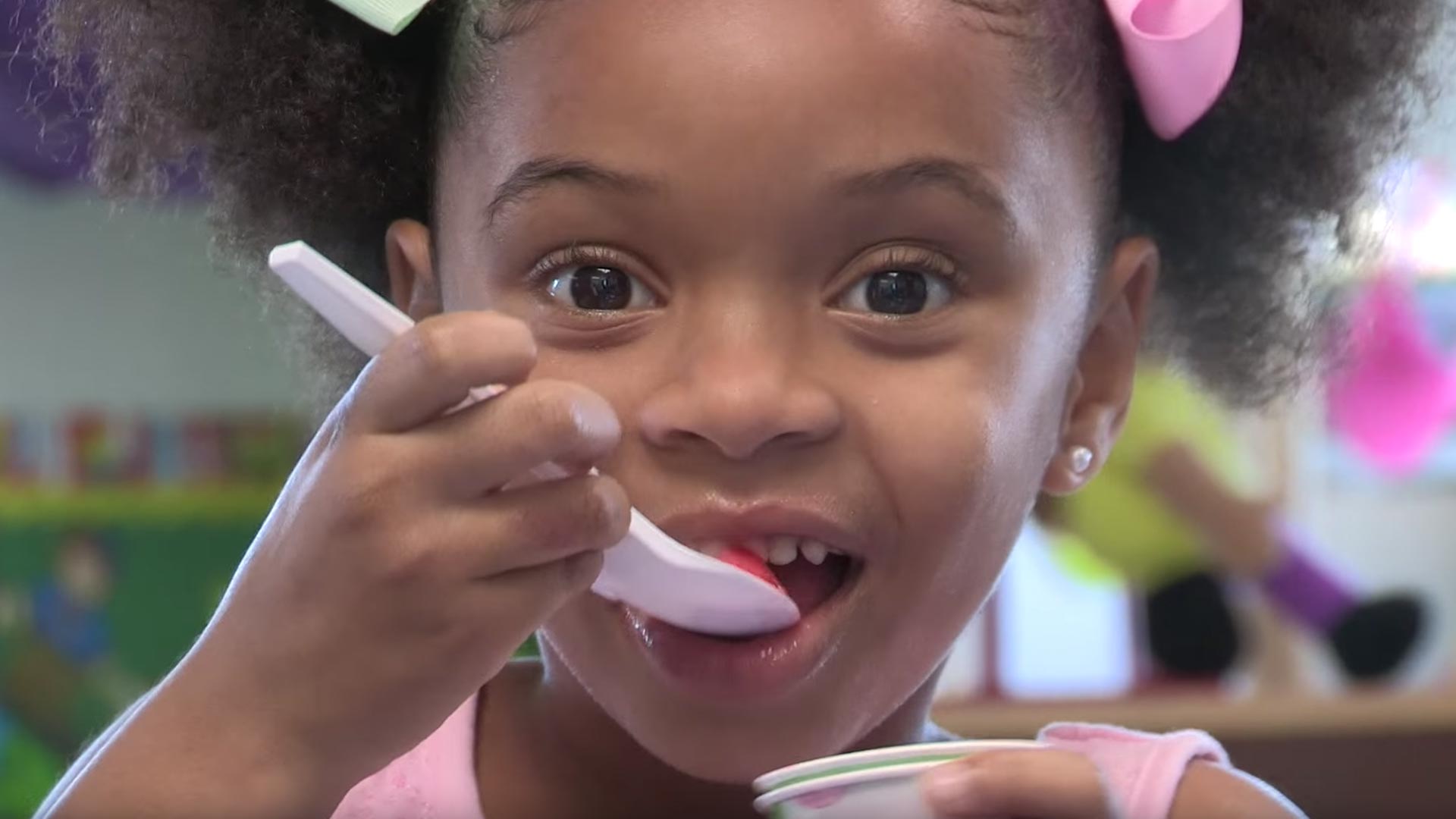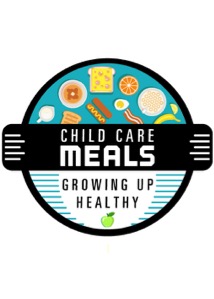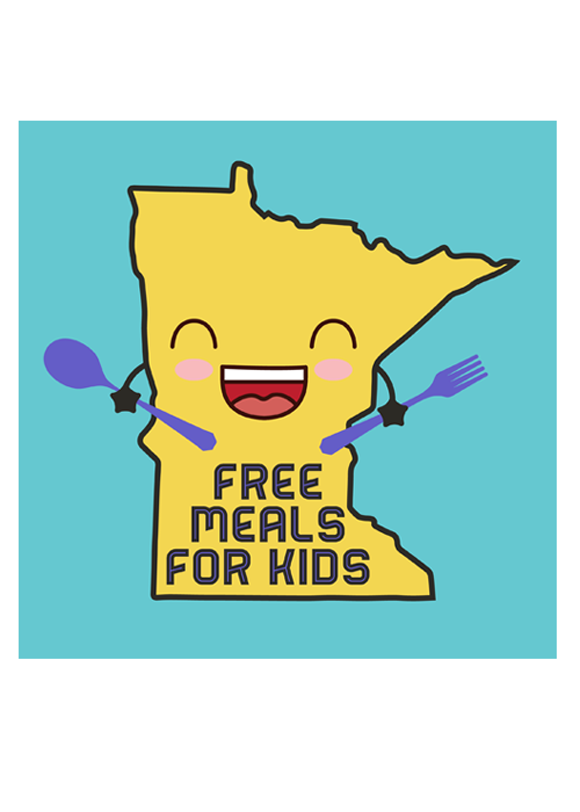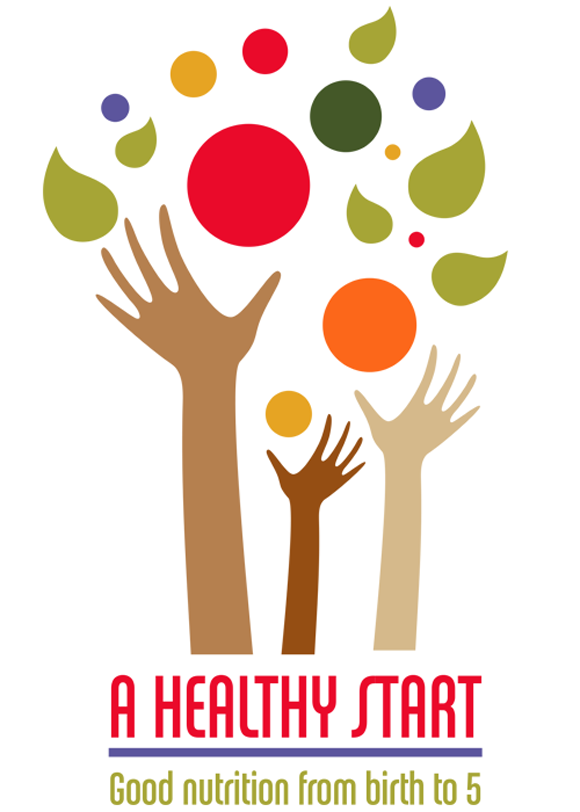Child Care Center Meals
CACFP
The Child and Adult Care Food Program (CACFP) is a federal program that provides nutritious meals and snacks to eligible children and adults who are enrolled for care at participating child care centers, day care homes, and adult day care centers.
Participating centers also receive federal reimbursement revenues based on the number of meals served.
Minnesota has nearly 1,000 sites where at least half of the children are eligible for meals. This translates to approximately 138,224 food-insecure kids.
Challenge
We saw a decline among in-home daycare providers back in 2019, and an increase in the capacity for meals at existing and new child care centers. We foresaw this trend, so we focused our work on licensed child care centers to drive enrollment in the CACFP.
The effects of COVID on the number of licensed child care centers and the number of children receiving meals have yet to play out.
Spikes in COVID cases, mandates to shelter in place, and the focus on service for essential workers resulted in decreases in the number of CACFP Childcare Center Sponsors, the number of children receiving meals, and the number of meals served. 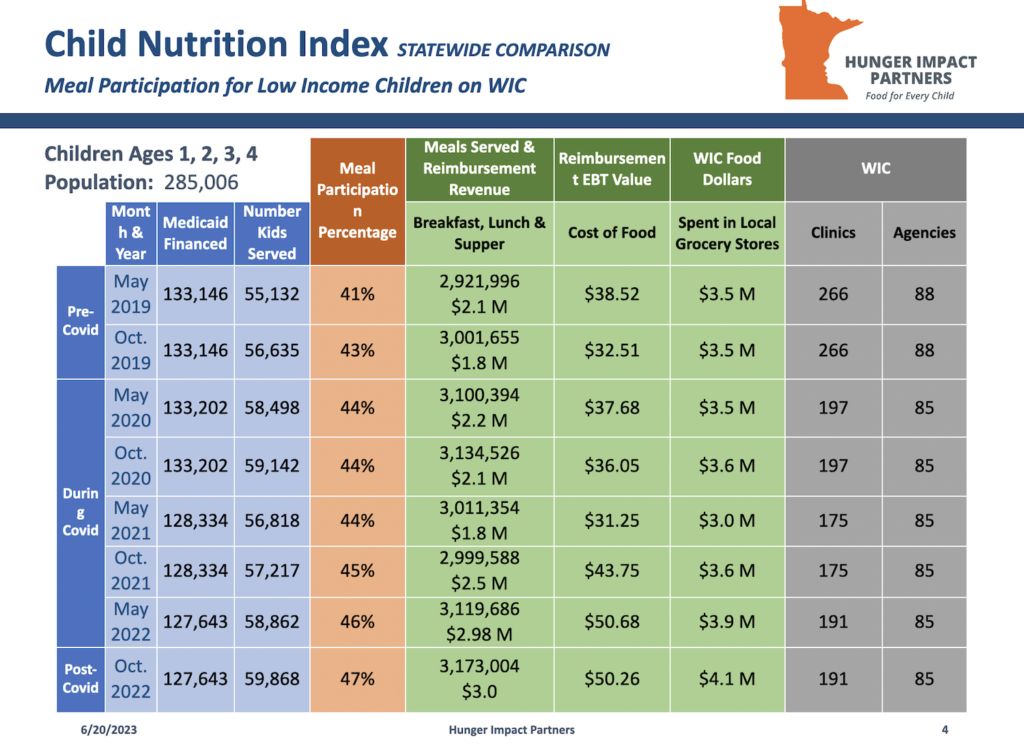
Our CNI also shows that the number of meals served decreased from 677,175 in May 2019 to 370,969 in October 2022 which is also evident in the meal participation percentage decreases seen during this same time.
Our Approach
With our stakeholders, we are:
- Supporting focus group sessions with Somali, Latino and African American families and providers to better understand administration obstacles and regulatory compliance.
- Developing strategies for raising program awareness of available enrollment process support.
- Identifying and helping to pre-qualify sites through proprietary data analysis.
- Developing and supporting sponsors through an evolving partner network of hub organizations.
- Building success stories and awareness, as well as facilitating nutrition education, meal planning and service.
Our Goal
Provide 5.9 million more meals by increasing enrollment of licensed child care centers.
